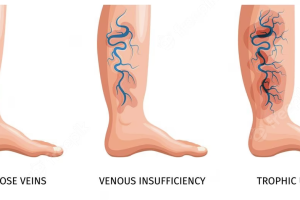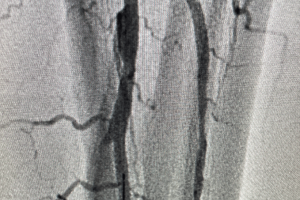The heart never takes a break. The heart is a strong muscle that never stops exercising, not for a minute. Every minute it needs blood, nourishment and oxygen. At Amarillo Heart Institute, we understand the importance of keeping your heart healthy and functioning at its best. We believe that a healthy heart is the foundation of a healthy life, and our goal is to provide you with all you need to achieve optimal heart health, a happier heart.
IVC Filter & IVC filter removal
An inferior vena cava (IVC) filter is a small device that is placed in the IVC, a large vein that carries blood from the lower body to the heart. The purpose of an IVC filter is to prevent blood clots from traveling to the lungs and causing a pulmonary embolism. IVC filters are typically used in patients who have a history of blood clots or who are at high risk of developing them.

The placement of an IVC filter is typically done through a minimally invasive procedure in which a catheter is inserted through a vein in the neck or groin and guided to the IVC. The filter is then placed and anchored in the vein. In some cases, imaging guidance, such as ultrasound or fluoroscopy, may be used to ensure accurate placement.
There are different types of IVC filters, including retrievable and permanent filters. Retrievable filters are designed to be removed after the risk of pulmonary embolism has passed, while permanent filters are left in place indefinitely.
IVC Filter placement
Steps involved in the IVC filter placement procedure:
- Preparation: The patient will be positioned on the procedure table and connected to monitors to track vital signs. The area where the catheter will be inserted (usually in the neck or groin) will be cleaned and sterilized.
- Anesthesia: Local anesthesia or conscious sedation will be administered to the patient to help manage any pain or discomfort during the procedure.
- Insertion of the catheter: A small incision will be made in the neck or groin and a catheter (a thin, flexible tube) will be inserted through the incision and guided through the vein to the IVC using imaging guidance, such as ultrasound or fluoroscopy.
- Placement of the filter: The IVC filter is then placed and anchored in the vein using small hooks or struts. Once in place, the catheter is removed.
- Post-procedure: After the procedure, the patient is typically monitored for a short period of time to ensure that there are no immediate complications. Pain medication may be given as needed and the patient will be instructed on how to care for the insertion site.
It is important to note that while IVC filter placement is generally considered a safe procedure, there are risks associated with the procedure, such as bleeding, infection, or damage to the vein. The decision to undergo IVC filter placement should be made carefully, and the benefits and risks should be weighed for each individual patient.
IVC Filter Removal
IVC filter removal is typically recommended when the risk of pulmonary embolism has decreased, or when the filter has become clogged or damaged. Removal is also recommended if the patient experiences complications related to the filter, such as filter migration or perforation of the IVC.
IVC filter removal is typically done through a minimally invasive procedure in which a catheter is inserted through a vein in the neck or groin and guided to the IVC. The filter is then carefully removed using specialized tools. In some cases, the filter may be difficult to remove, and surgery may be required.
The decision to remove an IVC filter is typically made on a case-by-case basis, taking into consideration the patient’s medical history, risk factors, and overall health. Patients who have had an IVC filter placed should be monitored closely by their healthcare provider, and any changes in symptoms or complications should be reported promptly.
It’s important to note that while IVC filters can be effective in preventing pulmonary embolism, they can also be associated with complications, such as filter migration, filter fracture, and IVC perforation. Therefore, the decision to use an IVC filter should be made carefully, and the benefits and risks should be weighed for each individual patient.









